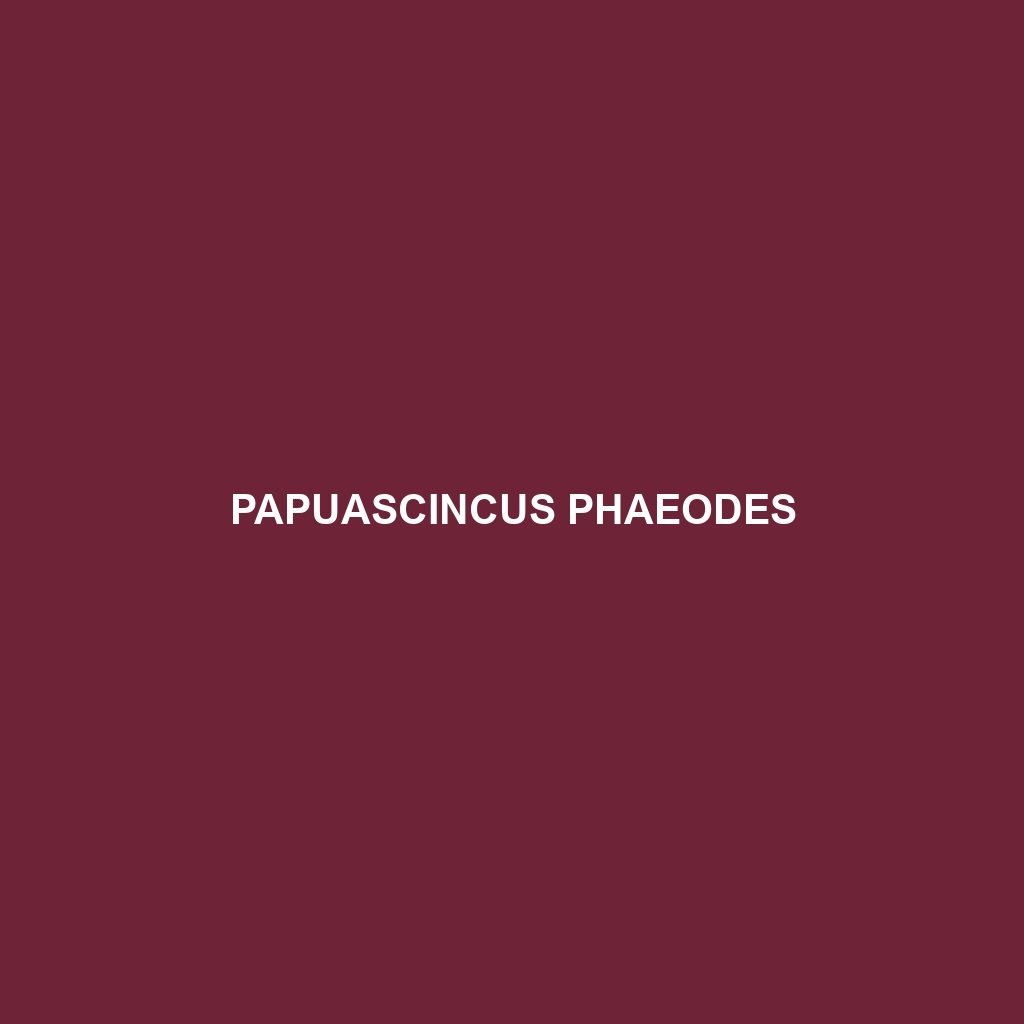Common Name
Papuascincus phaeodes
Scientific Name
Papuascincus phaeodes
Habitat
Papuascincus phaeodes is primarily found in the lush tropical rainforests of Papua New Guinea, particularly within the lowland and hill forests. These habitats are characterized by high humidity and a warm climate, making them ideal for a variety of reptilian species. In addition to rainforests, Papuascincus phaeodes can also be found in nearby savannas and temperate forests, where they thrive among leaf litter and detritus. The specific environmental conditions, including the organic matter found in these ecosystems, provide them with ample shelter and food sources.
Physical Characteristics
The Papuascincus phaeodes is a strikingly unique skink, reaching lengths of approximately 10 to 15 centimeters. It exhibits a slender body with an elongated tail, which it often uses as a defensive mechanism against predators. The coloration of this species is primarily a rich brown with subtle variations, enabling it to camouflage effectively within its forest habitat. Its smooth, shiny scales possess a metallic sheen, adding to its distinctive appearance. Notably, the limbs are well-developed, which aids in its arboreal lifestyle.
Behavior
Papuascincus phaeodes displays fascinating behavioral traits, particularly its nocturnal behavior. This skink is most active during twilight and night, hunting for insects and other invertebrates. It is known for its solitary nature, seldom found in groups except during the breeding season. Mating rituals are particularly intriguing, as males often engage in elaborate displays to attract females. In addition, the species exhibits burrowing behaviors, using its strong limbs to dig into the ground for shelter and protection.
Diet
Papuascincus phaeodes is primarily an insectivore, feeding on ants, termites, and other small invertebrates that are abundant in its rainforest habitat. The skink forages actively during its nocturnal hours, using its keen sense of smell to detect food. Occasionally, it may also consume plant material, making it somewhat of an omnivore. Its dietary habits play a crucial role in controlling the insect population, thus contributing to the ecological balance of its habitat.
Reproduction
The reproductive cycle of Papuascincus phaeodes is marked by its seasonal mating behavior, typically occurring in the warm, wet months of the year. The gestation period usually lasts about three to four weeks, after which females give birth to live young, a characteristic feature of the skink family. Offspring are independent from birth, with no parental care provided post-delivery. This reproductive strategy ensures that the species can maintain its population in the face of ecological challenges.
Conservation Status
As of the latest assessments, Papuascincus phaeodes is currently classified as Least Concern by the International Union for Conservation of Nature (IUCN). However, habitat destruction due to deforestation and land conversion poses significant threats to its populations. Conservation efforts are underway, focusing on habitat preservation and monitoring of the species’ population dynamics to ensure their continued survival in the wild.
Interesting Facts
One of the most intriguing aspects of Papuascincus phaeodes is its ability to regenerate its tail after losing it to predators, a common defensive strategy among skinks. This adaptation not only allows for their survival but also provides insight into evolutionary traits that promote resilience within species. Additionally, their striking coloration and unique behavioral adaptations make them a subject of interest for both researchers and reptile enthusiasts alike.
Role in Ecosystem
Papuascincus phaeodes plays a vital role in its ecosystem as both a predator and prey. It helps maintain insect populations, which is crucial for the overall health of the rainforest ecosystem. Furthermore, this skink serves as a food source for larger predators, thus fitting into the food web. Its interactions with various species highlight its significance as a player in the ecological structure of its habitat, contributing to the biodiversity that is characteristic of rainforest environments.
